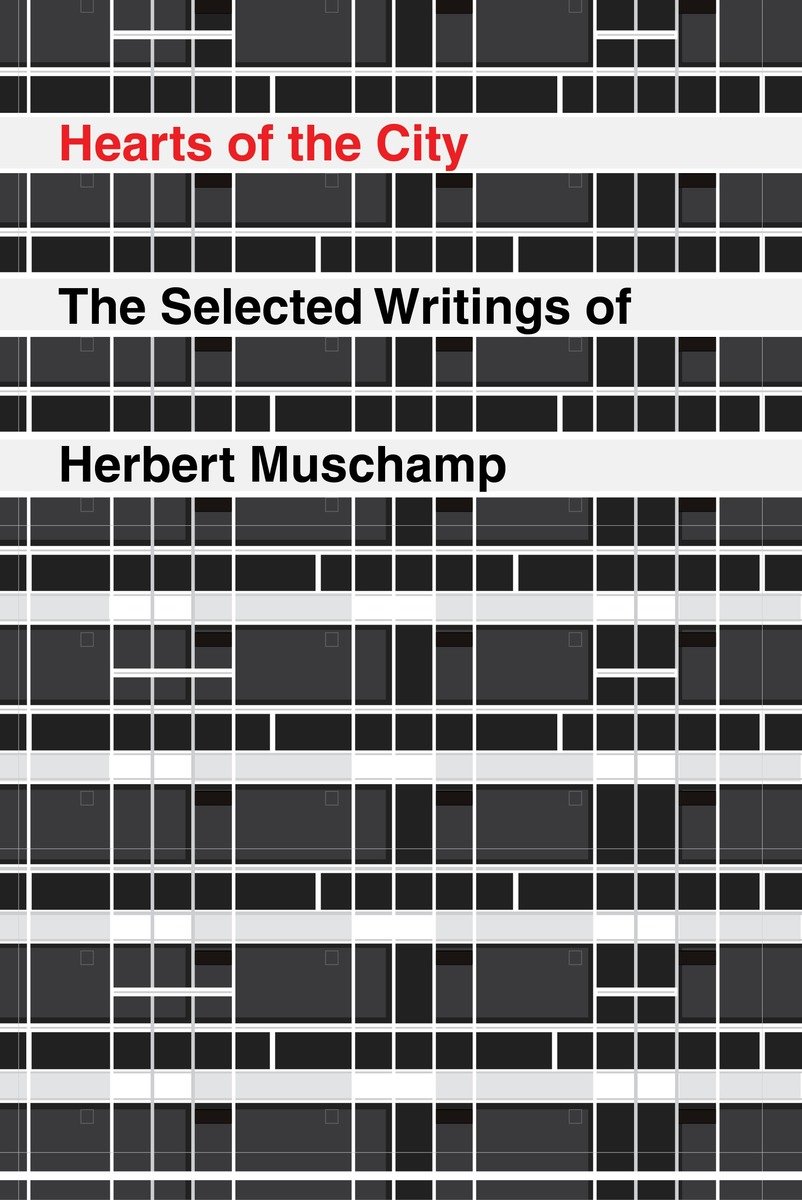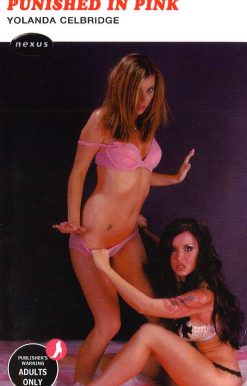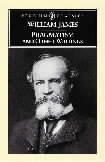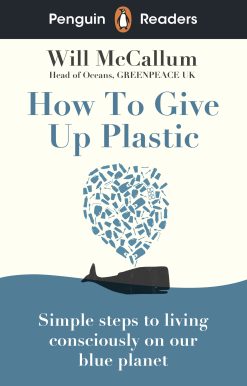The Selected Writings of Herbert Muschamp: Hearts of the City
50.00 JOD
Please allow 2 – 5 weeks for delivery of this item
Description
From the late Herbert Muschamp, the former architecture critic of The New York Times and one of the most outspoken and influential voices in architectural criticism, a collection of his best work.The pieces here—from The New Republic, Artforum, and The New York Times—reveal how Muschamp’s views were both ahead of their time and timeless. He often wrote about how the right architecture could be inspiring and uplifting, and he uniquely drew on film, literature, and popular culture to write pieces that were passionate and often personal, changing the landscape of architectural criticism in the process. These columns made architecture a subject accessible to everyone at a moment when, because of the heated debate between modernists and postmodernists, architecture had become part of a larger public dialogue. One of the most courageous and engaged voices in his field, he devoted many columns at the Times to the lack of serious new architecture in this country, and particularly in New York, and spoke out against the agenda of developers. He departed from the usual dry, didactic style of much architectural writing to playfully, for example, compare Frank Gehry’s Guggenheim Bilbao to the body of Marilyn Monroe or to wax poetic about a new design for Manhattan’s manhole covers. One sees in this collection that Muschamp championed early on the work of Frank Gehry, Rem Koolhaas, Zaha Hadid, Thom Payne, Frank Israel, Jean Nouvel, and Santiago Calatrava, among others, and was drawn to the theoretical writings of such architects as Peter Eisenman. Published here for the first time is the uncut version of his brilliant and poignant essay about gay culture and Edward Durrell Stone’s museum at 2 Columbus Circle. Fragments from the book he left unfinished, whose title we took for this collection—“A Dozen Years,” “Metroscope,” and “Atomic Secrets”—are also included. Hearts of the City is dazzling writing from a humanistic thinker whose work changed forever the way we think about our cities—and the buildings in them.
Additional information
| Weight | 1.2485 kg |
|---|---|
| Dimensions | 4.9784 × 16.9418 × 24.5618 cm |
| by | |
| format | |
| Language | |
| publisher | |
| Year Published | 2009-11-17 |
| Imprint | |
| Publication City/Country | USA |
| ISBN 10 | 0375404066 |
| About The Author | Herbert Muschamp is the author of File Under Architecture and Man About Town: Frank Lloyd Wright in New York City. He died in 2007. |
| Table Of Content | Acknowledgments Introduction by Nicolai Ouroussoff THE NEW REPUBLIC, 1987–1992The Temple of MarketingCorbu Saved from Drowning The Breached Wall The Perils of Public Art The Leaning Tower of Theory The Lie of the Land How Buildings Remember The Winds of Windsorism When the Cathedral Turned Black American Gothic The Wrong Prescription East/West Side Story Crowds and Power ARTFORUM, 1995, 1999Critical Reflections Moral of the Stories THE NEW YORK TIMES, 1992–2007One Building That Knows What It’s About For All the Star Power, a Mixed Performance Steel and Backbone in Hard Times Barcelona Breaks the Record for Inspired Urbanism For Times Square, a Reprieve and Hope of a Livelier Day The Thrill of Outer Space for Earthbound Lives In Philadelphia, a Showcase of Abandoned Hopes Reduced to Luxury The Niña, the Pinta, and the Fate of the “White City” Art and Science Politely Disagree on an Architectural Jewel’s Fate For Staten Island, A Ferry Terminal Rooted in the Past Gehry’s Disney Hall: A Matterhorn for Music St. John the Divine: It Can’t Go On. It Goes On. Thinking About Tomorrow, and How to Build It The Tale of a Chimney That Turned into an Oasis Some Unfinished Business on St.-Germain Roadside Attractions to Reckon With Modernism and Morality in the South Bronx New Public Housing, French Vintage 1922 Shaping a Monument to Memory This Time, Eisenman Goes Conventional To the Beach: A Baedeker for Baskers; Long Beach Island The Unconventional as a Convention “Things Generally Wrong in the Universe” In This Dream Station Future and Past Collide Miami Virtue: Arquitectonica’s Low-Rent Housing Viñoly’s Vision for Tokyo, and for the Identity of Japan More Is Less at a Free-Form Jamboree in Chicago A Nervous Prism of a Building for Manhattan What Makes a Building Shrivel Up and Die? The Gehry House: A Brash Landmark Grows Up A Man Who Lives in Two Glass Houses Fear, Hope, and the Changing of the Guard Frank Gehry Lifts Creativity Out of the Box The Homeless and the New Cold War Rude Awakening; Quake Jars Assumptions: A Critic’s View Architecture as Social Action, and Vice Versa An Appraisal; Columbus Circle’s Changing Face: More than Geometry Back to the Future Queens West: Why Not Something Great? In Paris, a Building That Melts Away Like Ice Frank Gehry’s American (Center) in Paris “Boss” Design: A Los Angeles Sketchbook Radical Moderation, Right Out of the ’60s If You Squint, This Is Not a Faulty Tower In California, an Art Center Grown from Fragments Visions of Community with Roots in the ’60s A Show Brings on a Severe Case of Period Envy Rem Koolhaas’s New York State of Mind Stay of Execution for a Dazzling Airline Terminal Sighting Beauty on the Far Side of Fear The Moment When the World Seemed New An Architect with a Knack for Synthesis An Emporium for Art Rises in the West Playful, Even Goofy, but What Else? It’s Disney What of Cities If the Blueprint Is Republican? Art, Setting, and the Architecture of the Heart A Declaration of the ’60s, Before the Doubts Preserving the Shrines of an Age, Not the Spirit A Flare for Fantasy: Miami Vice Meets Forty-second Street Where the Readers Are Inside the Books Broadway’s Real Hits Are Its Antique Theaters A “Monster” of a Masterpiece in Connecticut Among the Fountains with Tadao Ando: Concrete Dreams in the Sun King’s Court Remodeling New York for the Bourgeoisie In a Bygone Day, This Was the Look of the Future Getting Goofy on the Santa Ana Freeway Chelsea Dawning: Reawakened and Resplendent Buildings Born of Dreams and Demons The Prisoner of Beauty A City Poised on Glitter and Ashes In the Public Interest The Short, Scorned Life of an Aesthetic Heresy: Designed in Defiance of Modernist Tenets, 2 Columbus Circle Awaits Its Fate Nostalgia Tripping in Times Square In Japan, Art and a Museum Breathe as One A Primal Phantasmagoria Not Just for Gamblers Where a Room Is a Calling Card Architecture of Light and Remembrance Darling: Having a Surreal Time. Are You Here, Too? A Crystal Palace of Culture and Commerce Worthy of a World Capital Rethinking the Meaning of the Modern Form Follows Function into Ideal Circles Making a Rush-Hour Battleground High Art A Chance for an Architect to Let His Imagination Run Free A Flower Reopens in the Bronx Architects’ Visions of How the Modern May One Day Appear A Palace for a New Magic Kingdom, Forty-second Street Make the Modern Modern? How Very Rash! The Designs of a Genius Redesigning Himself For the Body, a Curvy Home That Calls to the Soul Searching for Yourself in Versace’s Mirror In Form and Function, It’s a Tale of Two Terminals The Miracle in Bilbao It’s Dark. It’s Scary. It’s Your Garage. A Midas of the Gold (Yes, I Do Mean Gold) Cudgel A Mountaintop Temple Where Art’s Future Worships Its Past Leading Lights, Whose Destiny Was to Be Dimmed Aalto, a Modernist Ahead of His Time A Return to the Glamour of Flying: Kennedy’s New Terminal Offers Style and Comfort for Jaded Travelers Of Sculpture and the Past Revivified Looking at the Lawn, and Below the Surface Choosing Prose over Poetry to Span a Bay Restoration Liberates Grand Vistas, and Ideas An Islamic Reminder of the Sacred in Design Living Boldly on the Event Horizon The Village as a Satirist’s Milieu and Muse Blueprint: The Shock of the Familiar A Twelve-Block Glimmer of Hope for New York The Premiere of a Koolhaas Fantasy The New Berlin—Building on the Rubble of History: Once Again, a City Rewards the WalkerCulture’s Power Houses: The Museum Becomes an Engine of Urban Redesign New Zoning Leaves Room for Skyline of the Future If the Cityscape Is Only a Dream An Appreciation: Style and Symbolism Meet in Design for Penn Station A Stunning Pier Hotel Design Stands Out Amid a Flawed Plan A Humble Manhole Cover Conveys the Global Grid A Tower That Flaunts Its Contradictions Art Deco Authenticity Trump, His Gilded Taste, and Me Crystal Corridor in the City of Glass The Passages of Paris and of Benjamin’s Mind Exploring Space and Time, Here and Now It’s Something New Under the Stars (and Looking Up) Tray Chic Our Anxieties to the Lions Reaching for Power over Streets and Sky Fusing Beauty and Terror, Reverence and Desecration How Modern Design Remains Faithful to Its Context Tibor Kalman: Seeing, Disbelieving Public Space or Private, a Compulsion to Fill It The Air-conditioned Reverie of a Fundamentalist Interior City: Hotel as the New Cosmopolis Where Ego Sashays in Style A Rare Opportunity for Real Architecture Where It’s Needed A Rational Vision That Lets You Know Who’s Boss Lincoln Center’s Next Big Production: Itself Defining Beauty in Swanky American Terms Imaginative Leaps into the Real World A Message from a Poet of Public and Private Memory Camelot’s Once and Future Glamour Postcards from the Old World Gone Global Austro Turf Forget the Shoes, Prada’s New Store Stocks Ideas With Viewing Platforms, a Dignified Approach to Ground Zero Leaping from One Void into Others The Deadly Importance of Making Distinctions A Courtyard at the Heart of the Story A Lesson Abroad: Get Comfortable with Continuity When Art Puts Down a Bet in a House of Games A Gift of Vienna That Skips the Schlag A Handsome Hunk of a Glass Tower Lessons of a Humanist Who Can Disturb the Peace Peace Lobby A Latin Jolt to the Skyline Castles in the Air Adorn Cities on Paper Fashion’s High Priestess of Gnosticism The Memorial Would Live in the Architecture A Heritage Rediscovered, Then Remade From Olympus, Divine Dresses The Way We Live Now: 5-18-03; Who Gets It ? Zaha Hadid’s Urban Mothership Blond Ambition on Red Brick A Building with a Song in Its Heart A Moon Palace for the Hollywood Dream Design Guidelines for Ground Zero Point More to Space City, U.S.A. Lunch Box for Art: A New Museum A Building’s Bold Spirit, Clad in Marble and Controversy Uncertain Future for the Past’s Treasures PATH Station Becomes a Procession of Flight Glamorous Glass Gives 10 Columbus Circle a Look of Crystallized Noir For Lower Manhattan, Tower Offers a Residential Stairway to the Sky Planet Prada The Library That Puts on Fishnets and Hits the Disco For the Classy and the Climbers, the High Priest of Art Deco Peep Show Eden Rocks The Secret History of 2 Columbus Circle The Grassi Is Greener Schadenfreude.com Freudian Slipcovers The Heir Bag Fragments from HEARTS OF THE CITY, 2006A Dozen Years Metroscope Atomic Secrets Index |
| Excerpt From Book | This book presents a theory about the contemporary city. I arrived at this theory a few years ago by flipping around an idea proposed by D. W. Winnicott, the British psychoanalyst. Winnicott once observed that artists are people driven by the conflict between a desire to communicate and an even stronger desire to hide. My theory states: A great city is a place driven by the conflict between a desire to expose and an even stronger desire to overlook. I start with the premise that conflict is the most important cultural product a city puts out. Works of art—books, plays, paintings, dances, songs, or buildings—are effects. They are interesting in themselves, of course, but so is the conflict that Winnicott considered their cause. The modern democratic city is an accumulation of effects, brought about by a constant pileup of conflicts. What binds the effects together—the First Cause of Cities—is the conflict between the desire to overlook and the desire to expose. This conflict is the major source of energy on which cultural production depends. It drives the contemporary city toward a deeper comprehension of its place and time. It is what distinguishes culturally productive social environments, like New York, from suburban shopping malls and other environments designed primarily for consumption. M. P. Baumgartner, a sociologist who teaches at Rutgers University, coined the term moral minimalism to describe the prevailing social ethos among suburbanites. The key feature of this ethos is the avoidance of conflict. In The Morality of the Suburb, Baumgartner writes, “The most basic component of [moral minimalism] is a strong conviction that conflict is a social contaminant, something to be avoided if at all possible and to be ended quickly once begun.” Barking dogs. Unmowed lawns. Barbecue smoke. Vandalism. Traffic infractions. Zoning violations. Gossip. Clearly, suburban dwellers can’t avoid neighbor squabbles and other conflicts. But within the suburban moral order, such conflicts register as bad things—contaminants, to use Baumgarten’s word. This order reinforces the desire to overlook, even at the expense of social justice or personal dignity. The desire to expose is suppressed. The inner conflict between these two competing desires is avoided. In the city, this is not possible. The desire to expose is constantly breaking through, however much it threatens to disturb the peace. I write about architecture, but buildings are not discrete objects floating in space. They are pieces of the city, elements of modern democracy’s greatest project. How they look, how tall they are, how much space they take up, who uses them, what is torn down to make room for them: by raising such questions, buildings are an inexhaustible source of conflict in city life. That conflict is one of the driving forces in American democracy. I’ve wanted to be part of it since I was ten years old. I was born in 1947. My family lived in a suburban area nine miles from downtown Philadelphia. My father bought the house, a decrepit prerevolutionary stone farmhouse, during the Depression. He was a young man at the time and the house cost a pittance. He devoted much time and labor to restoring it. When he bought the property, the location looked more like open country than a suburb. Fields surrounded the one acre that came with the house. Two of the roads surrounding the house had not been paved. Our property included a stable where my father kept a horse. He also built a picturesque swimming pool with stone sides that was fed by a natural spring. It was a special place to grow up. Too special, in fact. For one thing, the house was haunted by a secret: unmentionable memories of my father’s first wife and her suicide. Also, it was isolated—not just physically, but psychologically, too. This was a problem that befell many upwardly mobile, upper-middle-class families in the postwar decades. Cut off from their real roots, my parents sought to send down artificial ones by constructing a one-family Colonial Williamsburg. The house resembled a grange. But it wasn’t one, of course. The fields around the house were up for grabs. Eventually they were sold to developers who had a very different vision of what this neighborhood might become. In the course of my childhood, their vision came to prevail. Streets were paved. Lots were sub- divided. Row houses and semidetached houses went into construction. Against my father’s protests, the spring that supplied our swimming pool was diverted so that a water main could be installed. The pool dried up. A brick spring cellar in the basement dried up. Our house became a freak show in the middle of a normal postwar suburban neighborhood. This metamorphosis was the great drama of my childhood. It initiated the physical and emotional bifurcation that has colored my writing on architecture. I had mixed feelings about the new community taking shape around us. The houses invaded our psychological space. But they also gave me a chance to invade new spaces in turn. When I was seven, the construction sites seemed a superior form of playground. The houses themselves, when nearly completed, were the greatest toys you could imagine. It was an enormous adventure to tear around inside them, with their smell of new wood frames, their unfinished look of exposed cinder block and electric wires hanging out of the ceiling and walls. My enthusiasm for Frank Gehry’s work is partly rooted in that thrill of roaming through those rows of unfinished houses. Things got even more complicated when people started moving into them. This was my first lesson in how difference can breed feelings of superiority. My father regarded the new neighbors as social inferiors. Actually, they were far better off than his parents had been. Also, many, if not most of them, were Jewish. As it happened, so was the rest of his family. My grandmother on my mother’s side was a Hungarian Jew, which meant, by Mosaic Law, that my mother and her children were also Jews. My father was by no means a rabid anti-Semite, but neither was he immune to the WASP prejudices of his day. It’s hard to turn down the opportunity to feel superior, particularly if your parents lead isolated lives. In hindsight, I see that it was our responsibility to break out of the shell and make friends with our new neighbors. But if we’d been that kind of family, we wouldn’t have become so isolated in the first place. Instead, our isolations—our freakishness—stood exposed. It is hard to sustain an attitude of superiority when you feel like a freak inside. In 1956 my parents decided to sell the house and move to a rich, upperclass neighborhood a mile or two away. The distance was short geographically, but socially the new neighborhood was light-years away. It was populated by “old” families with inherited wealth. The houses were imposing. The lawns and gardens were breathtaking. In summer the air was stirred with the sound of leaves and the pop of tennis balls from the cricket club’s grass courts. Visually, it was an Eden. Psychologically, it was an expulsion from the Garden I’d left behind. When you’re very young, the home is a surrogate mother. It’s hard to tell where it stops and you start. The rationale for the move was snobbish and paradoxical. At the precise moment when potential playmates were moving into our neighborhood, my father decided that we didn’t have enough friends to play with. What this meant was that we didn’t have friends who fit his narcissistic image of us. He must have thought he was doing us all a huge favor by inviting us into such a lovely fantasy. My parents weren’t social climbers. I wish that they had been. We would have had such wonderful status symbols to play with. We would have been spoiled rotten. I could have had a soda fountain in the basement. I could have had a nose job. The young Tony Bill could have played me in a movie. But the truth is that our move to this place was just a more extreme version of their isolation. Here was a fancy house. Here was a fancy neighborhood. And here was a fantasy about living there. The fantasy included substituting desirable neighbors for unwanted ones. That was all. The house we moved into had a swimming pool. Early one spring we heard the sound of jackhammers coming from the backyard. We looked out the window and saw a wrecking crew demolishing the concrete walls of the swimming pool. In a few hours there was nothing but a large rectangular crater filled with rubble. The crew got into their truck and drove away. A few minutes later a dump truck pulled into the driveway and backed into the yard, and deposited its cargo of earth into the crater. This operation was repeated three times. Finally, another truck appeared, filled with rolls of grass sod. It took all afternoon to lay them on top of the new earth. But by 6:00 p.m., a perfect lawn had materialized. There was no way to tell what had been there just twelve hours before. The excuse for this maneuver was that the pool was an insurance hazard. A neighbor child might trespass when we were away, go for a swim, and drown. The real reason was that we weren’t properly furnishing Dad’s fantasy of our becoming social animals. One day I was sitting on the edge of the cricket-club pool. My mother was lying in a beach chair on the other side. Two women behind me were gossiping. It took me a while to realize that they were talking about us. Her mother is Jewish, but she converted. His first wife gassed herself in the garage. Exposed. Which was unfair, because it had never been my intention to hide. I didn’t want to be examined through someone’s lorgnette. I hated it here. Didn’t want to be looked upon as someone who wanted to be here. I might have said: Yes, I’m a Jew. We’re all Jews, and on top of that, I’m a fag! I’m in love with the lifeguard! Any lifeguard! And we’re all nuts! Mad as hatters! You think my family looks bad from a distance? Try looking up close. The truth is that I would have loved to be friends with these people. They were so handsome, assured, and gilded, and they scuffed around in cordovan loafers. Whereas the first day I went to the pool, I had to cross from the parking lot to the pool wearing my usual black dress shoes and socks. I looked ridiculous. Even my skin was the wrong color. In contrast to the ruddy or tan complexion of the rich children, my skin was pale olive. Then, my hair, which had been straight, had began to curl, but the local barbers only knew how to cut straight hair, with the result that my hair always looked frizzy and unkempt. It looked like my nerves. We had gone from pretending to be lords of the manor to feeling like interlopers. Even at home I couldn’t get rid of that feeling. Outside or inside the house, I felt unsafe. I began to feel estranged from my body. Salvation arrived in the form of a train. The commuter station was two blocks away. A one-way ticket cost thirty cents. The ride downtown took thirty minutes. Just standing on the platform, waiting for the train, I felt my panic slip away. It would be a long time before I came to understand the value of intermediary spaces. For the time being, I simply enjoyed it as the preliminary to my destination: downtown. The thirty-minute ride was a symbolic rehearsal of what I hoped would be my future. For now I could only make day trips to the city, but one day I wouldn’t return. With the cards I’d been dealt, I couldn’t win at any of the games my parents wanted me to play. In the city, I was prepared to take my chances. I’m a Jew, I’m a fag, I’m a sissy, and I’m smart. And I saw no reason why these shouldn’t be major assets. Downtown, there was no reason to regard them as secrets. Everyone there was a kike, a fag, a dago, a chink, a spade, a mick, a psycho, a spic, a wino, an artist, a pedophile, a bum, a hustler, a drag queen, a con artist, a lost young man, a poet, a musician. . . . The ticket in was to be smart. One day I would get a one-way ticket. Until then, there were plays and movies to see, department stores to wander through, libraries and museums to visit. Above all, there were streets to be devoured, street smarts to be learned. For the first time since my family moved, I felt at home. Now the city would be my surrogate mother. When people ask who I’m writing for, I sometimes say: I write for me, when I was twelve years old, standing on a train platform, reading a column by Ada Louise Huxtable in The New York Times while I’m waiting for the train downtown. Actually, the person I have in mind is a mall rat, stranded somewhere in the suburbs, seeking to lift his or her horizons above the maze of American consumerism. Ada Louise Huxtable was hired in 1961 as the first full-time architecture critic at The New York Times. I can’t remember precisely when I first read one of her columns. And I couldn’t have analyzed the hold her stories had on me. I did sense the power with which she claimed the city— possessed it with words. She used her authority to challenge the authority traditionally represented by architecture. With a pen she cracked open walls. She faced an art that, historically, has been used to cover up problems and turned it into an occasion to expose problems. In the process, she produced a powerful mythology about the city’s potential as a democratic form of art. |
Only logged in customers who have purchased this product may leave a review.






Reviews
There are no reviews yet.